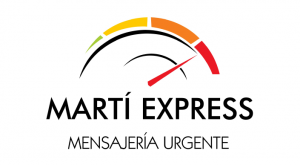Fixed Asset vs Current Asset: What’s the Difference?
In that case, the company will record a $10 million prepaid expense to account for the insurance expense it will show in the month that it already paid for. http://9lady.ru/moda-i-stil/platya-v-delovom-stile-dlya-jenschin-2019.html Marketable securities are securities that are heavily traded on public exchanges. Marketable securities are of two types – Equity and debt securities.
Marketable Securities
For example, a business pays its office rent for November on October 30th. Once they begin using the office space on November 1st, the payment would then be reported as an expense. Inventory covers the products you sell and is listed on your balance sheet as finished goods, works-in-progress, raw materials, and supplies. Any of your business’s outstanding debts or IOUs are considered accounts receivable. It’s the money that clients or customers still owe you for services already rendered or goods already delivered.
Current Assets vs. Fixed Assets: An Overview
- Thus, the contents of current assets should be closely examined to ascertain the true liquidity of a business.
- For example, Prepaid insurance expenses normally cover 12 months, and you can prepare 12 months schedule to ensure that expenses will be correctly recorded in Financial statements.
- Assets that fall within these four categories often cannot be sold within a year and turned into cash quickly.
- An example would be excess funds invested in a short-term security, putting the funds to work but keeping the option of accessing them if needed.
The excess cash is normally invested in low risk and highly liquid instruments to generate additional income. Cash Equivalents may include commercial paper, money market mutual funds, bank certificate of deposits, and treasury securities. Cash usually includes checking accounts, coins and paper money, undeposited receipts, and money orders.
What is your current financial priority?
If https://status4all.ru/1971-v-kontakte-eto-edinstvennoe-mesto-ty-mozhesh-pogovorit-so-stenoy-a-ona-otvetit-tebe-v-otvet.html are those which can be converted to cash within one year, non-current assets are those which cannot be converted within one year. On a balance sheet, you might find some of the same asset accounts under Current Assets and Non-Current Assets. On the balance sheet, the Current Asset sub-accounts are normally displayed in order of current asset liquidity.
- A current asset is a company’s cash and its other assets that are expected to be converted to cash within one year of the date appearing in the heading of the company’s balance sheet.
- She holds a Masters Degree in Professional Accounting from the University of New South Wales.
- Charlene Rhinehart is a CPA , CFE, chair of an Illinois CPA Society committee, and has a degree in accounting and finance from DePaul University.
- The current assets of XYZ Limited for the year ended on March 31, 20XX is $191,000.
- Now that we better understand the different types of current assets available, here are a few examples of current assets and how they can be used to fund your business.
- Cash equivalents are short-term investment securities with 90 days or less maturity periods.
Our work has been directly cited by organizations including Entrepreneur, Business Insider, Investopedia, Forbes, CNBC, and many others. Finance Strategists has an advertising relationship with some of the companies included on this website. We may earn a commission when you click on a link or make a purchase through the links on our site. All of our content is based on objective analysis, and the opinions are our own. Second, they can work to invest in new projects or expand the business. If demand shifts unexpectedly—which is more common in some industries than others—inventory can become backlogged.
Noncurrent Assets Simply Explained
https://nobat.ru/q/faq/5083-prosmotr-vlozhennyh-failov-v-okne/p2 include, but are not limited to, cash, cash equivalents, accounts receivable, and inventory. Creditors and investors keep a close eye on the Current Assets account to assess whether a business is capable of paying its obligations. Many use a variety of liquidity ratios, representing a class of financial metrics used to determine a debtor’s ability to pay off current debt obligations without raising additional funds. By definition, assets in the Current Assets account are cash or can be quickly converted to cash.
The final regulations do not include reporting requirements for brokers that do not take possession of the digital assets being sold or exchanged. These brokers are commonly called decentralized or non-custodial brokers. The U.S. Treasury Department and the IRS intend to provide rules for these brokers in a different set of final regulations.
For instance, Company A has cash and cash equivalents of $1,000,000 and current liabilities of $600,000. Adding these all up, we get the total current assets of $28,213,000. Current assets reveal the ability of a company to pay its short-term liabilities and fund its day-to-day operations.


